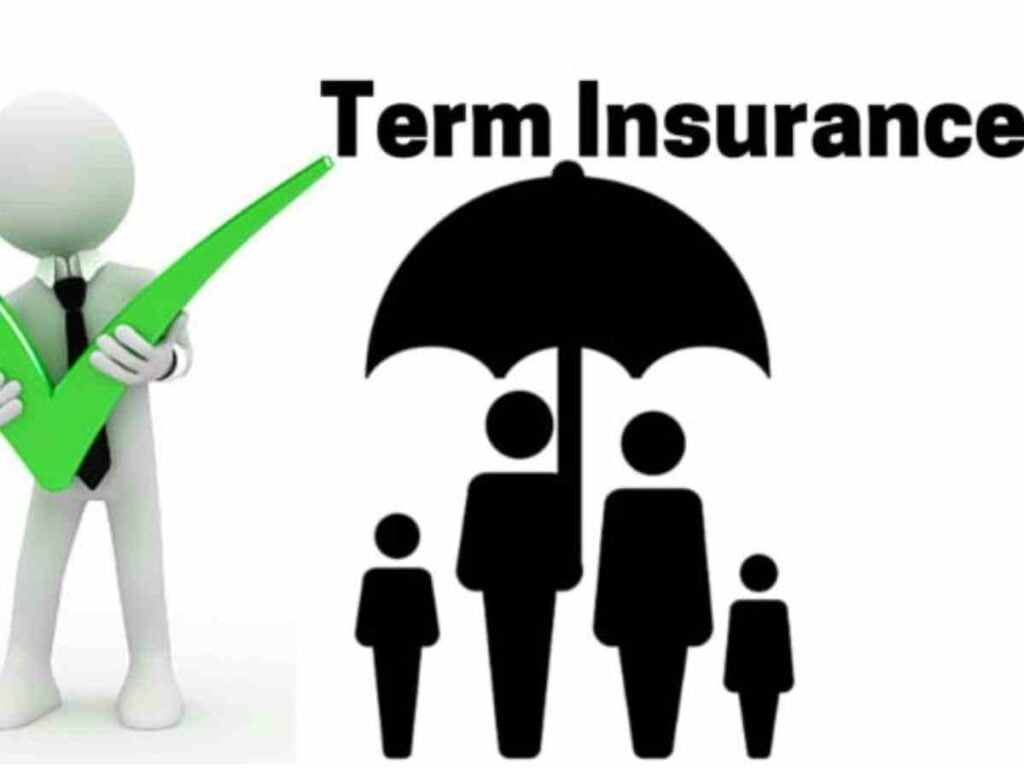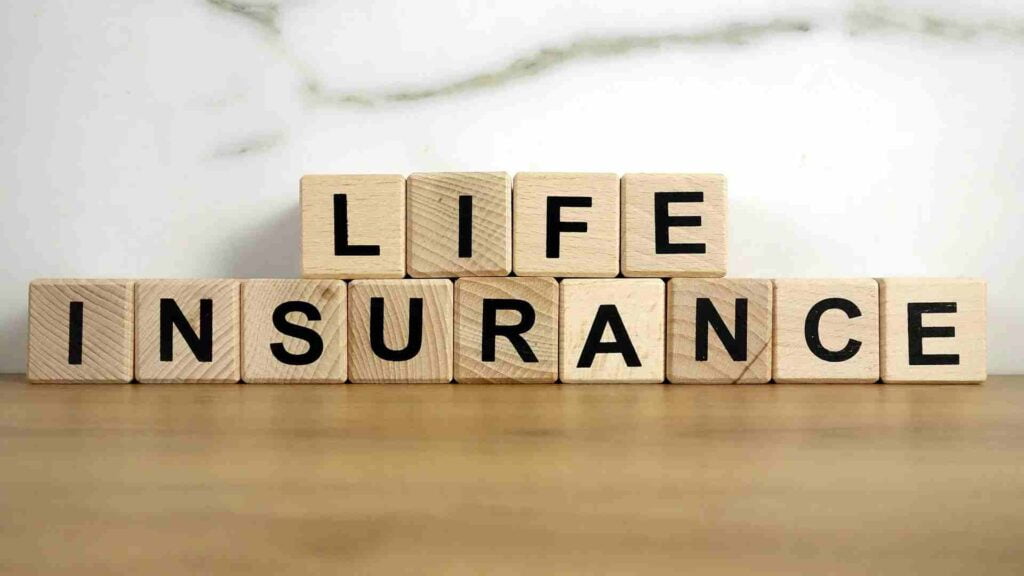Life insurance is a crucial part of many people’s financial planning. It provides a safety net for families, ensuring that loved ones are taken care of in the event of an untimely death. But what happens to this safety net when we retire? Does it still serve a purpose? And if so, what is it?
In this article, we’re going to talk about life insurance after you retire. We’ll look at why it’s important in retirement planning, what choices you have when you’re entering your golden years, and we’ll also consider other options besides life insurance. Whether you’re getting close to retiring or you’re just beginning to think about your future, this article will give you some helpful info about how life insurance fits into the picture.
Understanding Life Insurance Needs After Retirement

When someone retires, their life insurance needs can shift a lot. It’s because the things their insurance was supposed to take care of might not be the same anymore. Family situations change, and so do financial responsibilities. So, it’s essential to think about how retirement impacts all of this.
- Decreased Income Replacement Needs: For many, life insurance during working years is about income replacement for dependents. Upon retirement, the need for income replacement diminishes as retirees typically have fewer dependents relying on their income, and they may have other sources of income such as pensions or savings.
- Debt Obligations: If a retiree has paid off major debts like a mortgage or personal loans, the need for life insurance to cover these debts decreases. However, if there are still outstanding debts, maintaining life insurance can ensure these are not passed on to family members.
- Estate Planning: Life insurance can play a role in estate planning, providing funds to pay estate taxes or to leave a financial legacy to heirs or charities. This can be particularly important for those with larger estates or specific bequests in mind.
- Final Expenses: Life insurance can be used to cover final expenses, such as funeral costs, which can alleviate the financial burden on the family. This is often a consideration for retirees who do not want to leave their loved ones with these costs.
- Policy Conversion: Some retirees may have the option to convert their term life insurance to a permanent policy. This can be beneficial if there is a continued need for coverage beyond the original term, without the need for a medical exam.
- Healthcare Costs: As health-related expenses can increase with age, life insurance can help cover unexpected medical bills or long-term care costs that may arise during retirement.
- Changing Premiums: Retirees need to consider the cost of premiums after retirement. If premiums become unaffordable, it may be necessary to adjust the policy or consider alternative financial tools.
- Policy Cancellation: If a retiree’s financial situation is such that they no longer need life insurance, they may choose to cancel the policy. However, it’s important to be aware of any potential tax implications, especially if the policy has a cash value component.
When you retire, it’s a time to take a good look at your life insurance needs. Think about where you stand financially, what income you expect in the future, any debts you still have, and what you want to leave behind for your loved ones. This will help you figure out if you still need life insurance, and if so, how much.
Types of Life Insurance Policies for Retirees
Retirees have several options when it comes to life insurance policies, each with its own set of features and benefits. Here are the main types of life insurance policies suitable for retirees:
- Whole Life Insurance: This is a type of permanent life insurance that provides coverage for the policyholder’s entire life. The premiums are typically fixed, and the policy includes a savings component, known as cash value, which grows over time.
- Universal Life Insurance: Universal life insurance is another form of permanent coverage that offers more flexibility than whole life insurance. Policyholders can adjust their premiums and death benefits over time. It also has a cash value component that can earn interest.
- Variable Life Insurance: Variable life insurance allows retirees to invest the policy’s cash value in various investment options, such as stocks, bonds, and mutual funds. This means the cash value and death benefit can fluctuate based on the performance of the investments.
- Indexed Universal Life Insurance: This is a type of universal life insurance where the cash value’s growth is tied to a stock market index, like the S&P 500. It offers a balance between the potential for higher returns and the protection of a minimum guaranteed interest rate.
- Life Insurance Retirement Plan (LIRP): A LIRP is like having a financial buddy for retirement. It works by having a permanent life insurance policy that grows in value over the years. Think of it as a pot of money that you can tap into when you retire, and the best part is, you get some nice tax advantages along the way.
- Guaranteed Universal Life Insurance: This policy is designed to provide a guaranteed death benefit with a focus on low-cost coverage rather than cash value accumulation. It’s often used for estate planning or final expenses.
- Final Expense Insurance: Also known as burial insurance, this is a small whole life policy with a modest death benefit intended to cover funeral costs and other end-of-life expenses.
- Term Life Insurance: While term life insurance is not a permanent solution, some retirees may opt for it if they only need coverage for a specific period, such as until a debt is paid off or a financial obligation is met.
Each type of policy has its own advantages and considerations, and the right choice depends on the retiree’s financial goals, health status, and estate planning needs.
Policy Adjustments and Options
As people retire and move into the next chapter of their lives, they often realize that their life insurance needs have changed. This transition calls for a reassessment of their policies and exploring different options to make sure their coverage aligns better with their current situation.
- Maintain the Existing Policy: For those who still have dependents or outstanding financial obligations, keeping the current life insurance policy might be the best choice. This ensures that loved ones remain protected.
- Adjust Coverage Amount: As retirees, it’s a good idea to take a fresh look at our insurance coverage to make sure it still fits our needs. If our financial responsibilities have eased up, we might decide to lower the amount of coverage we have, which can also bring down our premiums.
- Policy Conversion: Some term life insurance policies allow for conversion to a permanent policy without a medical exam. This can be beneficial for those who want to maintain coverage but with the added benefits of cash value growth.
- Using Cash Value: For policies with a cash value component, retirees can use this accumulated amount to pay premiums or even supplement retirement income, providing financial flexibility.
- Surrendering the Policy: If the policy is no longer needed, retirees can surrender it for its cash value. However, this option should be considered carefully due to potential tax implications.
- Life Settlement: Another option is a life settlement, where the policy is sold to a third party for more than its cash surrender value but less than its net death benefit. This can provide a lump sum of money.
- Reduced Paid-Up Option: Some policies offer a reduced paid-up option, where the policyholder can stop paying premiums and receive a reduced death benefit. This can be a cost-effective way to maintain some coverage.
- Federal Employee Group Life Insurance (FEGLI) Adjustments: For federal retirees, FEGLI coverage offers options for reducing coverage after retirement, which can help manage costs while still providing benefits.
Retirees need to review their life insurance policies and consider these adjustments and options in light of their current and future financial needs.
Tax Implications of Life Insurance for Retirees
When you’re retired and planning for the future, figuring out how life insurance fits into your taxes can feel like wading through a maze. But it’s crucial to grasp these details to make sure your retirement plan is on track. Let’s break down the tax side of life insurance for retirees to make it easier to understand.
- Death Benefits: when you get a payout from a life insurance policy after someone passes away, you usually don’t have to pay taxes on that money. So, if you’re a beneficiary, the lump sum you receive is usually tax-free.
- Estate Taxes: If the policy’s payout increases the value of the estate beyond the federal exemption limit, which was $13.61 million as of the latest information, the estate may be subject to federal estate taxes. This is an important consideration for retirees with substantial assets.
- Interest on Installments: If beneficiaries opt to receive the death benefit in installments, any interest earned on the unpaid balance is considered taxable income.
- Cash Value Policies: Policies with a cash value component, such as whole life or universal life, have specific tax rules. Withdrawals up to the amount of the premiums paid are typically tax-free. However, if withdrawals exceed the premiums paid, the excess is taxable as ordinary income.
- Policy Surrender: Surrendering a cash value policy can lead to tax consequences. The cash surrender value received in excess of the premiums paid is taxable as ordinary income.
- Policy Loans: Loans taken against the cash value of a life insurance policy are not taxable as long as the policy is active. However, if the policy lapses or is surrendered, any outstanding loan amount exceeding the premiums paid will be taxable.
- Premiums: Life insurance premiums are not tax-deductible for individuals. However, if the policy is owned by a business or used for certain business purposes, there may be tax deductions available.
- Employer-Paid Premiums: If an employer provides life insurance, premiums paid on coverage over $50,000 are considered taxable income to the employee.
- IRS Tax Code 7702: This code sets guidelines for determining the tax status of cash value life insurance policies. It limits the amount of premiums that can be paid into a policy without it being considered a taxable investment.
- Life Settlements: If a life insurance policy is sold through a life settlement, the amount received above the policy’s cash surrender value is taxable. The taxation can vary based on the excess amount received over the premiums paid and the cash surrender value.
Retirees need to consult with a tax professional to understand how these rules apply to their specific situation, as tax laws can be complex and subject to change. Properly managing the tax aspects of life insurance can contribute to a more secure and financially stable retirement.
Health and Life Insurance
Health changes can significantly impact life insurance options and premiums for retirees in several ways:
- Improved Health: Positive changes in health, such as quitting smoking or losing weight, can lead to lower life insurance premiums. Retirees should inform their insurance provider about such improvements to potentially reduce their premiums and increase coverage options.
- Worsening Health: On the other hand, the development of certain health conditions can increase the risk profile of an individual, leading to higher premiums. Life insurance companies may charge more to insure people with health concerns that could result in serious illness or complications.
- Management of Existing Conditions: Taking good care of your health by staying on top of check-ups and sticking to your treatment plans can actually make you a less risky choice when it comes to applying for life insurance after retirement. And the bonus? It might even help keep your premiums more budget-friendly.
- Age and Health Correlation: As retirees age, the likelihood of health issues increases, which can affect life insurance costs. Premiums for new policies typically increase with age, especially if there are accompanying health issues.
- Medicare and Supplemental Plans: The choice of Medicare and supplemental plans can also affect out-of-pocket healthcare costs, which in turn can influence how much life insurance retirees feel they need to cover potential medical expenses.
- Long-Term Care Considerations: The need for long-term care can arise unexpectedly, and the costs can be substantial. Life insurance with a long-term care rider or a policy designed to cover such costs can be beneficial for retirees.
- Healthcare Cost Predictions: Estimating future healthcare expenses is a crucial part of retirement planning. Factors like health status, family health history, and lifestyle choices can affect these costs and should be considered when choosing life insurance coverage.
Retirees should regularly review their life insurance policies in light of any health changes and consult with insurance professionals to ensure their coverage meets their needs and remains cost-effective.
Life Insurance Investment Components
Life insurance policies, particularly permanent ones, often include investment components that can provide financial benefits. Here are the key investment components typically found in life insurance policies:
- Premiums: The regular payments you make to keep the insurance policy active.
- Death Benefit: The sum of money paid out to your beneficiaries upon your death.
- Cash Value: A portion of your premiums may be allocated to a cash value account within a whole life policy, which grows over time and can be used during your lifetime.
Additionally, some policies may allow for investment in various funds or accounts:
- Fixed-Interest Savings Account: Your premiums may be invested into a fixed-interest account, offering a steady rate of return.
- Variable Index or Market Account: Some policies invest in variable options that can fluctuate with market performance.
- Range of Investment Funds: Policies may offer a selection of investment funds, including equities, bonds, and money market instruments, tailored to your risk tolerance and investment goals.
Pros and cons of life insurance investment components for retirees:
Pros:
- Tax Advantages: The cash value in life insurance policies grows tax-deferred, and withdrawals up to the amount of premiums paid are typically tax-free.
- Supplemental Retirement Income: Policies with a cash value can provide an additional source of income during retirement, which can be accessed through loans or withdrawals.
- Estate Planning: Life insurance can be used as a tool for estate planning, offering a tax-free death benefit to beneficiaries.
- Guaranteed Returns: Some policies offer a guaranteed rate of return on the cash value, providing a stable investment component.
- No Contribution Limits: Unlike other retirement accounts, there are no annual contribution limits, allowing for more flexibility in funding.
Cons:
- Higher Premiums: The premiums for policies with investment components are typically higher than those for term life insurance.
- Complexity: These policies can be complex and may require the assistance of a financial advisor to understand and manage effectively.
- Lower Yields: The investment returns on the cash value component are generally lower compared to other investment vehicles like stocks or mutual funds.
- Costs and Fees: There can be additional costs and fees associated with the investment component, which can reduce the overall return.
- Potential for Lapse: If not managed properly, the policy could lapse due to insufficient funding, especially if loans are taken against the cash value.
Alternatives to Life Insurance

If life insurance isn’t the right fit, retirees have several other financial tools at their disposal to achieve similar financial security and legacy goals. Here are some alternatives:
- Annuities: Annuities can provide a steady stream of income during retirement, similar to the death benefit from life insurance. They can be structured to pay out for the rest of a retiree’s life, providing financial stability.
- Investment Accounts: Retirees can invest in stocks, bonds, mutual funds, and ETFs through various retirement accounts like 401(k)s and IRAs. These investments can grow over time and provide income or be passed on to heirs.
- Savings Accounts: High-yield savings accounts offer a safe place to store money while earning interest. They can be used for emergency funds or short-term goals.
- Certificates of Deposit (CDs): CDs are time-bound savings accounts with fixed interest rates that are typically higher than regular savings accounts. They’re a low-risk investment option for retirees.
- Money Market Funds: These funds invest in short-term debt securities and can offer higher returns than savings accounts, with relatively low risk.
- Dividend-Paying Stocks: Investing in stocks that pay dividends can provide a regular income stream and the potential for capital gains.
- Bond Funds: Bond funds invest in various fixed-income securities and can offer regular interest payments, serving as a source of income.
- Retirement Income Funds: These funds are designed to provide retirees with a steady income, often by investing in a mix of stocks and bonds.
- Real Estate: Owning rental properties can provide a steady income stream and potential tax benefits, along with the appreciation of property value over time.
- 60/40 Stock/Bond Mix: A traditional investment strategy for retirees, this mix aims to balance growth and income with risk management.
Does My Life Insurance End When I Quit My Job?
Each of these options has its own set of benefits and risks, and the right choice will depend on the retiree’s individual financial situation, goals, and risk tolerance.
Life Insurance for Pension Protection
Life insurance can be a strategic tool for pension protection, offering retirees peace of mind and financial security for their spouses or beneficiaries. Here’s how life insurance can be used for pension protection:
- Income Replacement: Life insurance can provide a death benefit that replaces the pension income if the retiree passes away. This ensures that the surviving spouse or beneficiaries maintain their standard of living.
- Pension Maximization: This strategy involves taking the full pension payout during the retiree’s lifetime and using part of it to pay for life insurance premiums. The life insurance policy is then used to provide for the spouse after the retiree’s death, potentially offering more benefits than the pension’s survivor option.
- Debt Coverage: If there are remaining debts at the time of the retiree’s death, life insurance can help cover these, ensuring that the pension funds are used for living expenses rather than debt repayment.
- Long-Term Care Planning: Life insurance can also be structured to help cover long-term care needs, which might otherwise deplete pension savings.
- Legacy Planning: Retirees can use life insurance to leave behind a legacy for their family, providing a tax-free benefit that can help with estate planning.
- Tax Benefits: Buying life insurance through qualified retirement plans like a 401(k) or pension can offer tax savings, as premiums can be paid with pre-tax dollars.
Retirees need to consider their health, life expectancy, and financial goals when deciding on life insurance for pension protection.
FAQs
Q 1. What happens to my term life insurance policy when I retire?
Ans. When you retire, your term life insurance policy will continue until the end of its term. If you wish to maintain coverage after the term expires, you may need to renew the policy, convert it to a permanent policy, or purchase a new policy.
Q 2. Can I convert my existing life insurance policy to a product more suited for retirees?
Ans. Many term life insurance policies offer a conversion feature that allows you to convert to a permanent policy without a medical exam. This can be beneficial if your health has declined or if you’re seeking a policy with a cash value component.
Q 3. Are there any life insurance policies that specifically cater to the needs of retirees?
Ans. Yes, there are life insurance policies designed with retirees in mind, such as final expense insurance, which covers end-of-life costs, and guaranteed universal life insurance, which offers low-cost coverage with a focus on death benefits rather than cash value accumulation.
Q 4. What should I consider when naming beneficiaries for my life insurance policy after retirement?
Ans. Consider the financial needs of your beneficiaries, potential tax implications, and the role of the death benefit in your estate plan. It’s also important to keep beneficiary designations up to date and to consider secondary beneficiaries.
Q 5. What are the implications of canceling a life insurance policy during retirement?
Ans. Canceling a life insurance policy can have tax implications, especially if the policy has a cash value component. You may receive the cash surrender value, which could be taxable if it exceeds the premiums paid.
Q 6. Can life insurance be used to fund a grandchild’s education in lieu of a traditional inheritance?
Ans. Yes, life insurance can be structured to provide a death benefit that can be used to fund a grandchild’s education. This can be done through specific beneficiary designations or by setting up a trust.
Q 7. How do I assess the financial stability and reputation of a life insurance company for my retirement plan?
Ans. Look for ratings from independent agencies like A.M. Best, Moody’s, and Standard & Poor’s. Also, consider the company’s history, customer service reputation, and reviews from other policyholders.
Conclusion
In conclusion, life insurance continues to play a vital role even after retirement. It provides financial security, aids in debt repayment, assists in estate planning, and can even serve as a tool for legacy creation. The investment components of certain life insurance policies can also contribute to a retiree’s financial strategy. However, it’s important to remember that everyone’s situation is unique.
Therefore, it’s crucial to consult with a financial advisor to understand the best course of action for your personal circumstances. As we’ve explored in this article, life insurance is not just about providing for others in the event of our death, but it can also be a strategic tool in managing our financial health during our golden years.

Join Shubham, a finance enthusiast with a mission to empower readers with the knowledge and tools to achieve financial freedom. Discover smart financial advice and unlock your financial potential.


